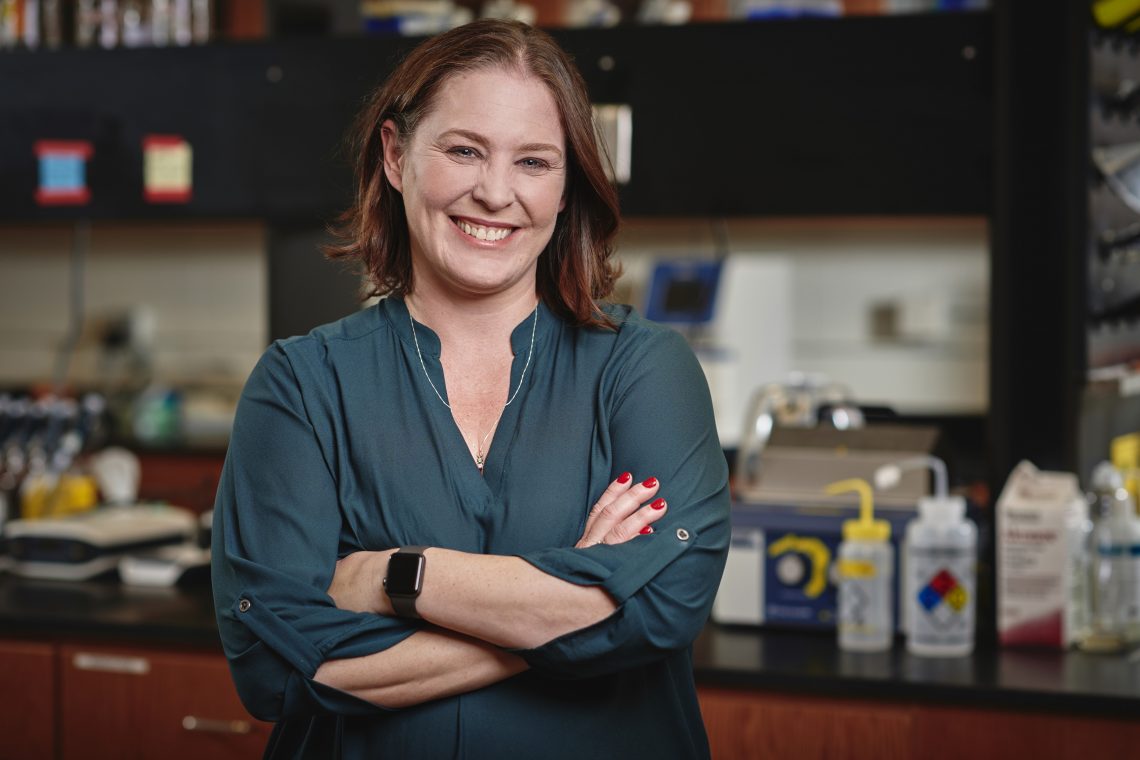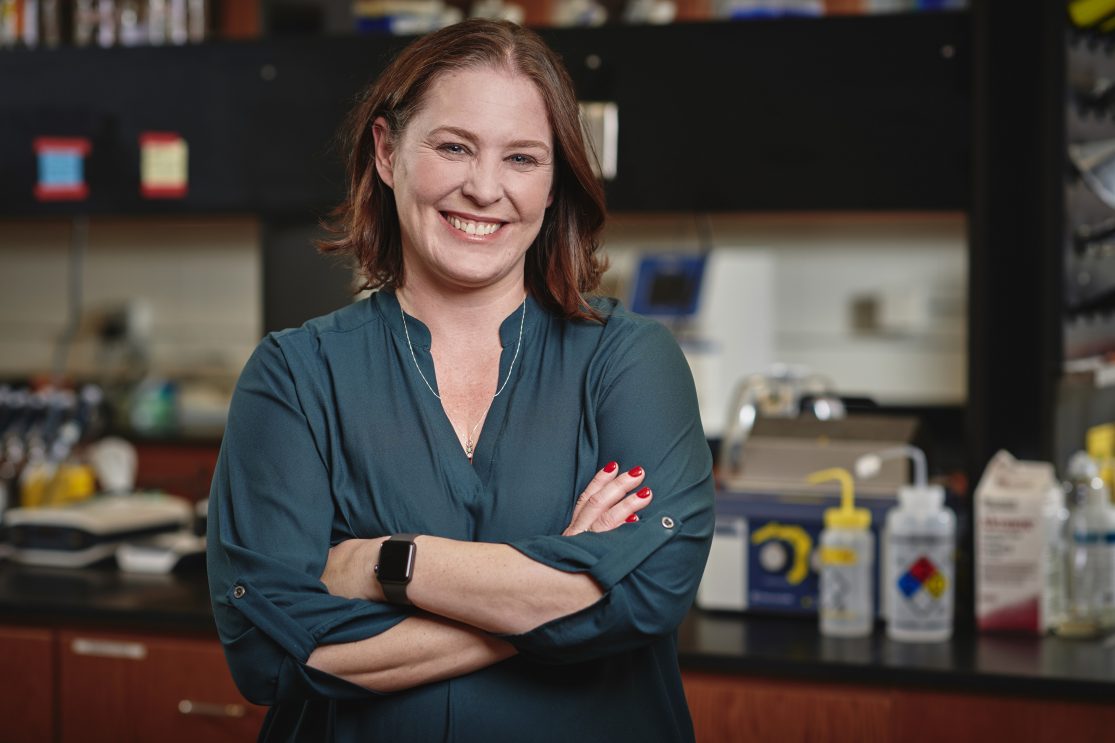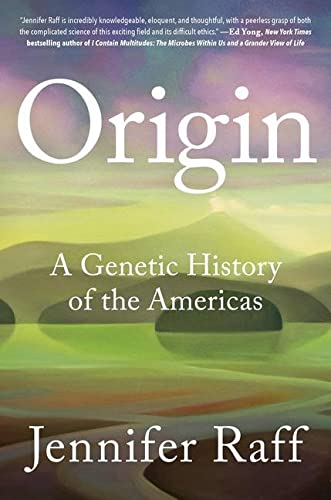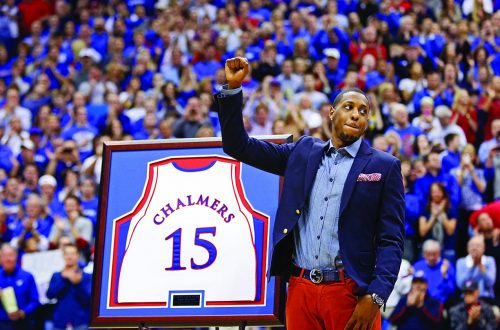
‘A Love Letter to My Discipline’
In a new best-seller, an anthropological geneticist at the University of Kansas advances an ethical approach for researching the ancient history of North American settlement

From her laboratory in Fraser Hall, Dr. Jennifer Raff has brought science-based insights into some of the largest and long-standing questions about the first appearance of human communities in North America. This year, the geneticist and anthropologist with the University of Kansas has summarized her findings in Origin: A Genetic History of the Americas. Raff begins her New York Times best seller with a detailed history of the genetic and anthropological research about the settlement of North America and how flawed, often racist, assumptions led scientists to make incorrect, harmful conclusions about Indigenous nations and people in North America. The book goes on to describe how Raff and other researchers are working to forge—and attempting to repair—relationships between non-Native scientists and Native peoples. It’s an accessible, enjoyable read about recent discoveries in genetic history, as well as the evolving cooperative relationship between Indigenous communities and non-Native scientists.
A research-lab childhood
Raff’s family is originally from Carbondale, but they moved to Springfield, Missouri, when she was young. There, her father—an engineer with a master’s degree in geology—would take Raff and her sister to explore the region’s caves and teach them how to interact with a site. “We learned the correct way—or the respectful way—for entering and leaving a cave, how to behave while one is in a cave, and how to take care of it, and the ecosystems, and the animals there,” Raff says.
Later, the family moved to Bloomington, Indiana, where Raff’s mother would return to school to earn her PhD, often bringing Raff along with her. “I essentially grew up on college campuses,” Raff says. “I would follow her to the lab and very often either spend time in the lab or in university libraries, just kind of hanging around, reading, getting to know biology. There was really one path I wanted to pursue, which was to become a professor, have my own research lab and learn new things about the world. I just couldn’t decide whether I wanted to do archaeology or biology.”
The movie Jurassic Park, which Raff saw as a senior in high school, would offer both an unrealistic presentation of a geneticist as well as a more realistic insight that it might be possible to combine both the study of the past with the new field of genetics. “So as an undergraduate at Indiana University, I majored in both biology and anthropology and kind of drifted towards biological anthropology, which is closely related to archaeology, but studies humans,” she explains.
Just as Raff was finishing her undergrad degree, IU hired Frederika Kaestle, a leading researcher on ancient DNA. Kaestle received a brand-new lab, where Raff stayed on to do her work for graduate school.
Raff says throughout her academic career, she’s been taught by “incredible” mentors. “They’ve all modeled respectful research and how important it is when we’re doing this work as not-Indigenous scientists to listen to those communities to do the work in a way that respects their beliefs and their feelings about the sacredness of these remains,” Raff explains. “That really made an impact on me, and it’s something I try to convey to my students, and hopefully was able to get across in the book.”
The problematic history of cultural genetics in North America
Dr. Kim Tallbear (Sisseton-Wahpeton Oyate), professor of Native studies at the University of Alberta, and Canada research chair in Indigenous Peoples, technoscience, and society, says this push for change in the study of Indigenous Peoples has been a long time in coming. “Most of the progress, I think, is that Indigenous communities have pushed for so hard for the last three decades,” she says. “They have demanded better treatment, and some scientists have stepped up, and some haven’t.”
Tallbear explains much of the conflict is caused because Eurocentric cultures’ views on life and death differ so drastically from Native cultures’ views. “In English and in Western culture, life is organismally defined … but that’s just not the case of a lot of Indigenous worldviews, because life is defined more in terms of the way all beings, and all things, in the universe are related. Even if something isn’t an organism—say it’s a stone or fire—it’s part of the life cycle.” She says that while many Western thinkers would consider this concept wholly spiritual, Indigenous Peoples simply don’t see it that way. “We are literally related to the stars,” Tallbear says. “Life on earth was seeded by what came from space. So, when Indigenous people say those things, they are speaking materially and truthfully; they are not only speaking spiritually.”
Tallbear credits Raff as being an ally scientist—a non-Native who understands and works within the parameters of the belief of most Native people that the blood and bones of ancestors should be treated with the same respect as a living person, used only with permission, and then returned, if applicable.
Gradually, this field of research is being shaped by a more respectful approach among non-Native scientists as well as by Natives within the profession.
Raff says she’s seen an increase in the number of Native scientists and Native young people entering the profession, as well as a concerted outreach to Native communities in the US, Canada, Mexico and Australia for programs like summer internships. “There’s another organization which I’m a huge fan of called the Native Bio Data Consortium, which is an effort by Indigenous scientists to have their own biobanks, their own large-scale research projects, and to advocate for the kinds of research and data sovereignty they’d like to do.”
But the relationship between scientists and Native communities continues to be shaped against the background of centuries of conflict, cultural oppression, and a series of “scientific” experimentations beginning in the 1920s on Native communities without their consent. Unsurprisingly, many within Native communities are skeptical of the non-Native scientific community’s ability and authority to probe and represent ancient Native history.
When asked by Lawrence Magazine if genetic research on Native Peoples can be done in such a way that it doesn’t undermine Native American cultural identities and sovereignty, a prominent Native geneticist responded with a mixed “maybe” and an outline for her hopes of how the field could evolve in the future.
“Genetic research is a basic science that has consistently sought to discredit Native American identity and seeks to further undermine Indigenous knowledge about DNA and what it should and should not be used for. Since many researchers in this topic area of genetics are non-Indigenous, tribal sovereignty will continue to hang in the balance. Non-Indigenous genetic researchers constantly say that it is important for Indigenous people to engage in genomics in order to benefit from the healthcare advancements; however, it is important for these researchers to note that they have an obligation to Indigenous Nations to work with and for Indigenous people to improve their health. Not to use Indigenous people for their personal or professional gain or even to just satisfy their curiosity about who are Native Americans at the molecular level,” writes Rene Begay (Dine/Navajo) from the Centers for American Indian and Alaska Native Health, University of Colorado Anschutz Medical Campus. “In my opinion, the type of genetic research that will not undermine Native American cultural identities and sovereignty is having a member of the Indigenous community be the scientist leading the team who knows the genetics from a cultural and Western education perspective. The work needs to come from inside the community and may ask for support from outsiders who wish to support the Indigenous community as an ally.”
The overlap of ancient and modern lives
One interesting behind-the-scenes fact about Origin is that it is a book focused on an epic timescale and multiple cultures and communities that was written by one scholar facing very contemporary challenges. Raff says writing the book took about four years from start to finish. “That was compounded by the pandemic and compounded by the fact I had just had a child,” she says. She also says the success of the book has surprised her. “I mean, if I’m being honest, it still feels like it’s something happening to somebody else, which is strange,” she laughs.
Of course, Raff is first to say she didn’t do the work alone. She credits her colleagues at KU, as well as other archaeologists and geneticists across the country, for looking over various drafts of the book and making corrections. She also worked closely with Native American editors.
Raff says she wrote Origin both because she thinks it’s important for scientists to make their knowledge accessible to the masses and as “a love letter to my discipline. I want to see us do better. I think we can do better. I do believe that we can do this work in a way that is ethical, respectful, that involves accepting when people say no, but being courageous enough to go to tribes and talk to them.”

The questions and emerging insights behind Origin
At the core of Jennifer Raff’s Origin: A Genetic History of the Americas is the methodology and answers that genetic research can provide to the question of “Where did North American Native communities originate?”
Raff and other geneticists’ work in the lab reveals two major antecedents of modern Native North American peoples: ancestral East Asians and Ancient Northern Siberians. Of course, those populations have their own antecedents and complex migration patterns scientists are still working to untangle. Raff equates it to trying to reconstruct someone’s life from their Instagram account. It’s not inaccurate, but it is incomplete.
Generally, scientists now think a small group of people from East Asia began to migrate toward the Americas about 36,000 years ago. This group continued to share gene flow with East Asia for about 10,000 years, but by 25,000 years ago, the gene mixing stopped completely and the group split into two.
One group stayed largely in place and is known as the ancient Paleo-Siberians. The other group moved on to become part of the Americas.
Then, 24,000 years ago, there’s evidence to show the ancient Paleo-Siberians and ancient Native Americans began mixing with another group entirely—the Ancient Northern Siberians. As the climate cooled at the Last Glacial Maximum, people moved out of Siberia completely, with no evidence of people living there from about 20,000 to 15,000 years ago.
Some of those people seeking a warmer climate settled in what modern people often think of as the Bering Land Bridge—the so-called bridge of land that appeared during that last ice age where early peoples crossed into the Americas—but Raff says this area should be thought of not as a bridge, but a lost continent, which scientists now refer to as Beringia. Rather than a crossing point, Beringia was a home to people for many generations. Beringians would differentiate into southern and northern populations, with some becoming adept at coastal living and others becoming adept at killing large land animals like mammoths. As Beringia was reclaimed by the sea, some Beringians would move on to become ancestral Native Americans, while some moved back into Russia. Unfortunately, the archeological remains of Beringia are now underwater.
Raff knows the science in her field will have advanced even as people are reading her book. New evidence will provide new insights into the ancient peoples who moved across the globe slowly, with groups intermixing and separating over thousands of years. Genetic work such as Raff’s can even show how some populations may have separated for tens of thousands of years before mixing again. Pinpointing exactly when and where all those genetic groups intersect—or perhaps even identifying previously unknown populations of DNA in Native Peoples—continues to be the focus of Raff’s ongoing work.
Story by Amber Fraley
This article appears in the summer 2022 edition of Lawrence Magazine. All text and photographs copyright Lawrence Magazine/Sunflower Publishing.





